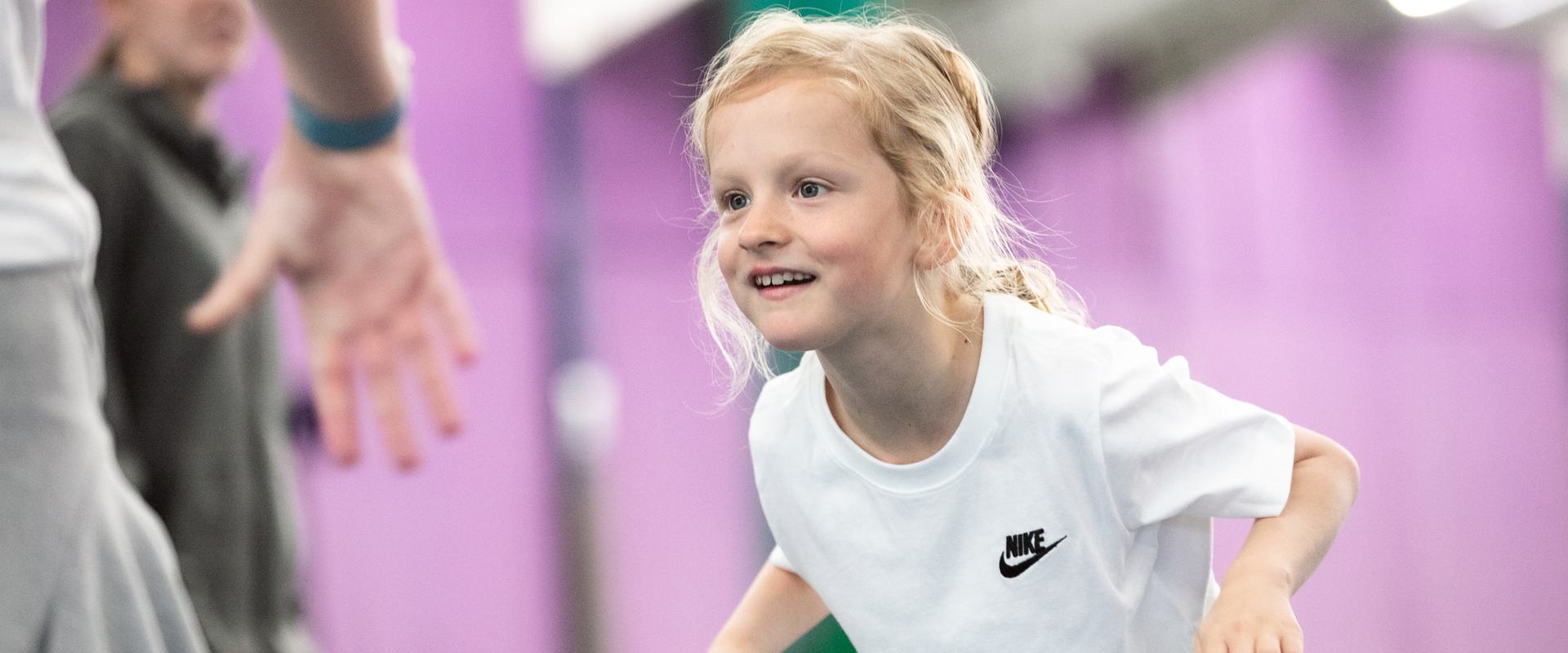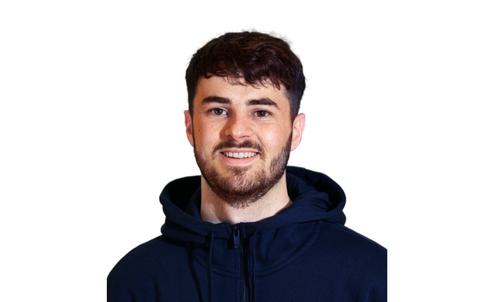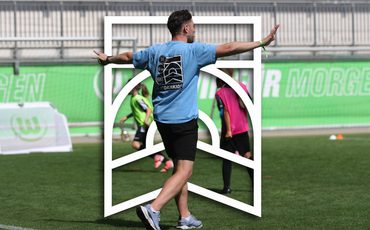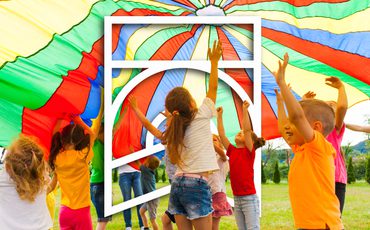
Holistic coaching: Taught and Caught
with Barnaby Sargent Megicks
It is common nowadays to see and hear about holistic coaching practice. It makes up one of the ICOACHKIDS pledges of good practice to create positive youth experiences in sport and is frequently mentioned when on coaching courses. So, what is meant by holistic coaching and how is it done? This blog will attempt to briefly answer this question, focusing on the what, who, why and how in looking to provide meaning and purpose to the term.
What is it (the what)
Let’s be clear on the ‘what’. What is meant when people talk about holistic coaching? The term holistic is derived from an idea in philosophy: the whole is greater than a sum of its parts. Simply, all of something is better than its individual aspects. For us as coaches, this means that a child should develop in a rounded and balanced way, rather than focusing on one area of their potential development. This is the idea of whole-person development, which is what holistic coaching aims to achieve. Although sport has traditionally prioritised physical and technical development, holistic coaching should look to develop children across multiple domains to account for potential development in all aspects of each person. For example: physical, technical, tactical, mental and social-personal (Lara-Bercial, Haskins and Jolly, 2011). Development can be in two camps of reasoning, development outcomes should either contribute towards children's sporting prowess (termed performance excellence) or their life skills (termed personal excellence) (or both!). Coaching outcomes should be drawn back to these two simple reasons. Children are developing to enhance their performance and enhance their personal outcomes but these both lead back to the ultimate goal – creating positive experiences in sport.
You, the coach, are best placed to determine how holistic coaching looks in your context, considering the characteristics of your children, for example, their age or gender. You are coaching with individuals making up a unique group of children, with specific needs. As such, they will need their particular blend of physical, technical, tactical, mental and social-personal development. These will change over time as they grow as people (so consider their long-term development), across sessions and seasons. Get to know what they need, then pursue holistic outcomes for each child (it is good practice to track their progress against the domains over time).
To what end (the why)
So why adopt holistic coaching? First, it is worth mentioning you are unlikely to lose your sporting performance focus if you shift to a more holistic approach, your sessions are already most likely highly geared toward ensuring your children develop their physical and technical skills. Afterall, these tend to be the bedrock
of most physical activity! Holistic coaching is about harnessing the opportunity of sport for more than just sport, as a positive experience to benefit to children in and out of physical activity, currently and in the future. Your session is more likely to be fun, interesting and exciting (not just focused on technique) and this will further charge their progression in the future! Fundamentally, by aiming to coach holistically, we are trying to coach in a way which contributes towards the development of positive physical activity and life experiences. Now, many people would say that is the bedrock of good coaching!
What children (the who)
So, what kind of coach and what age group is holistic coaching relevant for? In short, every coach in every youth sport context can consider, plan for and coach with a holistic development agenda. Yes, that includes the so-called ‘elite’ youth. Children are continuously growing and developing in the world around them, they are impressionable, and they are learning in the environment around them – so think, every sporting opportunity is a youth development opportunity. This means that no matter how high performance they are, your coaching will influence their life development, hence the chance to positively underpin this with holistic coaching. Children must develop as rounded people - physically, technically, tactically, mentally and socially and personally in physical activity, and your coaching is a means for them to do this.
In practice (the how)
Key to enacting a holistic development approach is being purposeful in planning. It is often believed that holistic development can be ‘caught’ naturally in your sessions, but it needs to also be ‘taught’, clearly and intentionally. Holistic development is not a by-product, a fortunate bonus or a matter of luck. No, you must strive to create a learning environment conducive for children to develop in multiple different ways. Assuming holistic development will occur in your usual sessions will unlikely result in multi-domain development. Like physical and technical, tactical, mental and social-personal outcomes need to be planned and thought-through. In your session plan, you can plan for objectives in each domain. For example, social development – verbal communication. Then, in practice, follow that up: facilitate social interactions, use of open questioning approaches, empowerment of your players to self-organise.
Let’s take the social development example a step further. The social interactions your children have are a rich source of development. So, in sessions, the conversations you have with them, your use of spoken and body language, your behaviour and then their group discussions, in-play communication, etc., these all shape their social development. Therefore, in being intentional, it could be valuable to plan and facilitate specific social interactions in your sessions. For instance, in a pause in training gameplay, challenge each team to discuss their performance against the points you have given them to develop, then create an improvement point for the next part of the game. Finally, ask one specific member of their team to summarise and verbally share this with the wider group. These interactions are creating ample social development opportunities (communication, teamwork, leadership)
For each session, you could plan for a balance of objectives in physical (e.g., agility), technical (e.g., passing), tactical (e.g., positioning), mental (e.g., autonomy) and social-personal (in-play communication). Design their practice around these and then after the session, you can reflect upon how successful the children were in achieving these or working towards them. Importantly, ask yourself the question: did they show signs of development across the holistic session objectives? It is important to be realistic, development takes time, this means you must continuously consider and then plan for holistic development. It is good practice to integrate holistic development into long, medium, and short-term plans and goals. Take this further, as you may do for technical development for a season, consider how a multi-domain development may evolve over in your context and use that to inform your planning.
To understand if you are achieving holistic development, it is helpful to consider what development looks like. For physical and technical, success is often quite clear, for example, completion of the skill as it is represented in a visual way. How about leadership or confidence? For intangible outcomes like these, consider how these becomeobservable. What does leadership look like for your children? This might be that they have begun to hand out bibs, help other players in a drill or add to team discussions. For confidence, this may be the child puts their hand up in discussions, they ‘carry’ themselves better with a more assertive body language or they make eye contact when talking. Remember, you know your children best, so think about their nature and how they may show development.
There is a reason holistic coaching is often talked about more than seen in practice, it can be tricky to do. After all, sport is often heavily shaped toward physical and technical activity, making development in these areas much easier than tactical, mental and social-personal. It starts with a real shift in intent and perspective, alter your coaching inhibitions from seeking to develop skills and techniques to positive experiences and whole-person development. Through this, physical and technical development will still emerge, but embedded in a holistic coaching approach (you don’t lose out on anything!).
A quick summary
This blog provides a summary of holistic coaching, swiftly answering the questions of what, who, why and how, making some suggestions of how to adopt it in practice. Many people understand holistic to mean many different things, similarly, this blog post represents my (the authors) understanding. Yet, the core premise remains the same – whole-person development for sport and life. Considering this, it might be useful to reflect on your coaching practice, asking how it supports holistic development and what more you could do. Don’t forget, you, as their coach, are well placed to know the children, their needs, and make a difference in their performance and personal development.
References
Lara-Bercial, S., Haskins, D. and Jolly, S. (2011). UK Coaching Children Curriculum. Leeds: Sports Coach UK.
Contributor:

Barnaby Sargent Megicks
Barnaby is a PhD Researcher at Leeds Beckett University, where he also works for ICOACHKIDS. His current work seeks to explore the nature of talent development environments across Europe. He has previously studied at the University of Birmingham and Loughborough University. Aside from his research, he is also a Hockey Coach.
Comments
Related Pages


